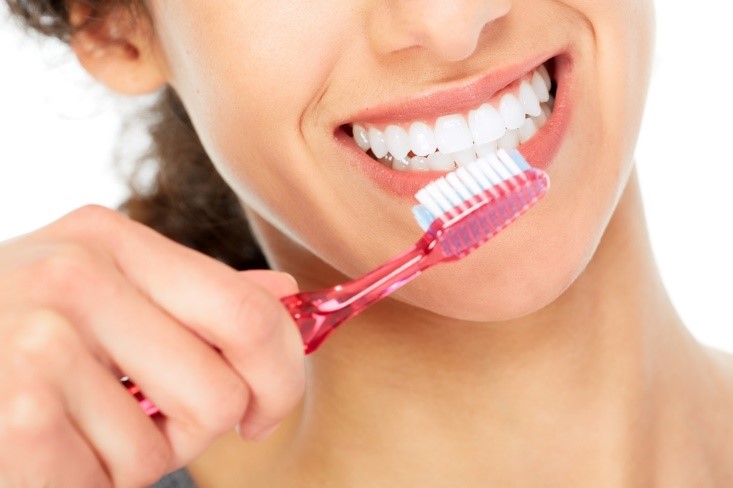Brushing your teeth seems simple. Grab your brush, toss on some toothpaste, brush away for a little while, spit, rinse, and you’re done, right? Well, not quite. That’s a good place to start, but we’re going to go a bit deeper into how you should brush your teeth, to help you form better oral care habits.
Brushing your teeth is the best way to prevent common oral health issues, so if you take the time to understand this guide, you’ll be able to avoid gingivitis, tooth decay, and a myriad of other uncomfortable, expensive dental problems. Let’s get into it now!
Step 1 – Choose The Right Brush
Great toothbrushing starts with the right brush, so this is the perfect place to begin. Let’s start with bristles.
Soft-to-medium bristle stiffness will be the best for the majority of people. Avoid extremely stiff bristles, as they can actually damage your teeth and your gums.
As far as size goes, this is mostly up to you. The most common size is about an inch long and a half-inch tall. This is fine for most folks. Angled brush heads can also be helpful in getting into the insides of your teeth.
You also have the option to choose an electric toothbrush. If you can afford it, we recommend doing so. Electric toothbrushes are more effective at removing plaque and bacteria, and often have timer functions that can ensure you brush for at least 2 minutes.
Step 2 – Choose The Right Toothpaste
As a rule, you should always be using fluoridated toothpaste. While there are people who would have you believe that fluoride is a toxic, harmful chemical, this is simply not the case. Fluoride is a naturally-occurring substance, and it’s absolutely critical for the health of your mouth.
Fluoride helps with remineralization. This is the process by which damaged enamel, such as enamel softened by tooth decay – can be repaired. It’s completely safe, and an absolutely essential component of a high-quality toothpaste.
Avoid any toothpaste that’s “organic” or “herbal”, and does not contain fluoride. They simply won’t be as effective. If you’re not sure what toothpaste you should be using, ask your dentist. They can provide you with an informed recommendation.
NOTE: Never use charcoal “whitening” toothpaste. It is extremely abrasive, and will destroy the enamel and dentin of your tooth, causing permanent damage.
Step 3: Brush Properly – And For At Least Two Minutes
If you have a manual toothbrush, put a generous dab of toothpaste on, angle it at 45 degrees (compared to your gums) and gently brush it back and forth in short strokes that are about the width of your tooth.
Move from side-to-side, starting with the outer surfaces of the teeth. Repeat this process for the inner surfaces, and the chewing surfaces. Ideally, you should be spending at least 2 minutes brushing your teeth.
The same advice applies to using an electric toothbrush, but you don’t have to move the toothbrush on your own. Simply move it slowly across the surfaces of your teeth, allowing the motor to do the work for you.
Step 4: Floss At Least Once A Day
Simply brushing your teeth will not eliminate all of the plaque and bacteria hiding between your teeth. To do that, you need to floss. You should floss once per day, at a minimum.
Flossing properly will provide you with the best results, and keep your mouth healthy. Using traditional dental floss is typically recommended by dentists.
However, if you’re pressed for time, floss picks are a good alternative. They are not as effective, but they are better than not flossing at all.
The same is true of water flossers like the Waterpik. Traditional flossing is still recommended, but water flossers are still effective at destroying and removing bacteria.
Step 5: Finish With Mouthwash (But Not Right Away!)
Mouthwash is useful for preventing tooth decay and gum disease. But if you use it right after brushing, you’ll wash away the beneficial fluoride that’s been left behind on your teeth after brushing. Wait at least 30 minutes before using mouthwash to avoid this.
You could also consider using it at some other point in the day, such as after lunch, to keep your mouth healthy throughout the day, even when you don’t have the opportunity to brush.
Follow This Guide – And Preserve Your Oral Health With Proper Brushing Techniques!
Brushing your teeth properly is the most important thing you can do for your oral health. So follow this guide now, and make sure that your teeth are getting the care and attention that they need.

